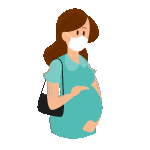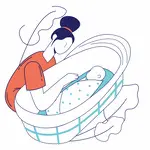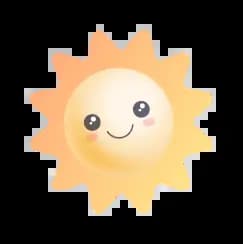The journey of bringing a new life into the world is a hard one, and the process of the birth itself can get quite exhausting for some. During labour, you go through 3 stages that marks the arrival of your little one.
The First Stage
The first stage of labour in itself consists of 3 sub-stages; Early Labour, Active Labour and the Transitional Stage.
Early Labour
In this stage, your cervix makes preparations for giving birth by shortening and becoming thinner. At this time, you might experience contractions that are 20 minutes apart, and are barely noticeable. But sometimes, they also might feel like cramps or the kind of pain that you experience during menstruation. But even though the contractions might not see, too severe to you right now, it is always advised, that even during this stage, you stay at home, until the contractions get stronger.
Active Labour
The contractions during this time start to become frequent and powerful, and your cervix continues to dilate from 3 cm to 10 cm now. From 20 minutes between each contraction to just 3 to 4 minutes apart contractions are what you can expect right now. During this stage, it is always better that you shift to the hospital that you are planning to give birth in or give a call to our midwife in case you are planning on a home birth.
Transitional Stage
The first urge to start pushing might occur during this stage. Feeling sick and shaky during the stage is a normal thing, so don’t worry or feel like you won’t be able to get through the day, because you truly can! Since now the contractions become more frequent and painful, you might crave for a painkiller.
The Second Stage
In the second stage of labour, you will become fully dilated and will be ready to bring in the little one into the world. Your cervix would now fully be open and you will be ready to start pushing. The doctors/nurses or your midwife will help you achieve the best possible position for birthing. The stage in itself can last from mere minutes to a couple of hours at best. As each contraction takes place, you will be able to feel your baby’s head against your pelvis and when you push during your contractions, your little one moves closer to the pelvis. At the end of the stage, your baby’s head will emerge and once this happens, the body too will follow shortly with the next contraction.
The Third Stage
You are finally holding your little one in your arms and there is happiness all around, but the final stage still remains to be seen through; the placenta delivery. If you start feeling more contractions post the delivery of your baby, don’t be alarmed, this is completely natural. With another push, you will feel the placenta peeling away from the wall of the uterus. Once this happens, your doctor/midwife might just double check to make sure that nothing was left behind in your uterus. If needed, your doctor could also be open to giving you an injection to speed up the process of the delivery of the afterbirth. However, if you want, you can also do this naturally.
FAQ's
Q. What are the three main stages of labor?
Ans.Labor is divided into three main stages: the first stage, where the cervix dilates; the second stage, where pushing leads to the baby’s birth; and the third stage, which involves delivering the placenta. Each stage plays a vital role in bringing your baby into the world safely.
Q. What happens during early labor?
Ans.During early labor, your cervix begins to shorten and thin (efface). Contractions may feel like mild cramps and occur every 15–20 minutes. It’s usually advised to stay at home during this phase unless instructed otherwise, as it can last several hours before active labor begins.
Q. How do contractions change in active labor?
Ans.Contractions in active labor become more intense, longer, and closer together—typically 3 to 4 minutes apart. Your cervix dilates from 3 cm to 10 cm. This is when it’s time to move to the hospital or call your midwife if you're planning a home birth.
Q. What is the transitional stage of labor?
Ans.The transitional stage is the final phase of the first stage of labor. Contractions become very strong and frequent, and you may feel shaky, sick, or overwhelmed. This stage is intense but short and often signals the beginning of the pushing phase.
Q. When should I go to the hospital during labor?
Ans.You should head to the hospital when your contractions are 3–4 minutes apart, lasting about 60 seconds, and have been consistent for over an hour. Always consult your doctor or midwife for guidance based on your pregnancy and birth plan.
Q. What happens during the second stage of labor?
Ans.In the second stage, your cervix is fully dilated (10 cm), and you’ll begin pushing. You’ll feel pressure as the baby moves through the birth canal. With each contraction and push, your baby gets closer to delivery. This stage ends with your baby's birth.
Q. How long does the pushing stage last?
Ans.The pushing stage can last from a few minutes to a couple of hours. It varies depending on whether you’ve given birth before, your baby’s position, and your physical condition. Your doctor or midwife will guide you through breathing and pushing techniques for an effective delivery.
Q. What happens after the baby is born?
Ans.After your baby is born, the third stage of labor begins—delivering the placenta. You may still feel mild contractions. The placenta usually comes out with one last push. Your care team ensures it’s delivered fully to avoid complications and may assist with medication if needed.
Q. Is it normal to feel pain or cramping after childbirth?
Ans.Yes, feeling pain or cramping after childbirth is normal, especially during the third stage when the placenta is delivered. These contractions help your uterus return to its normal size. Pain management options, like natural techniques or medications, can be discussed with your care provider.
Q. Can I deliver the placenta naturally?
Ans.Yes, you can choose to deliver the placenta naturally if there are no complications. However, your doctor may suggest an injection to speed up the process and minimize bleeding. It’s important to discuss your preference with your healthcare team before or during labor.




















